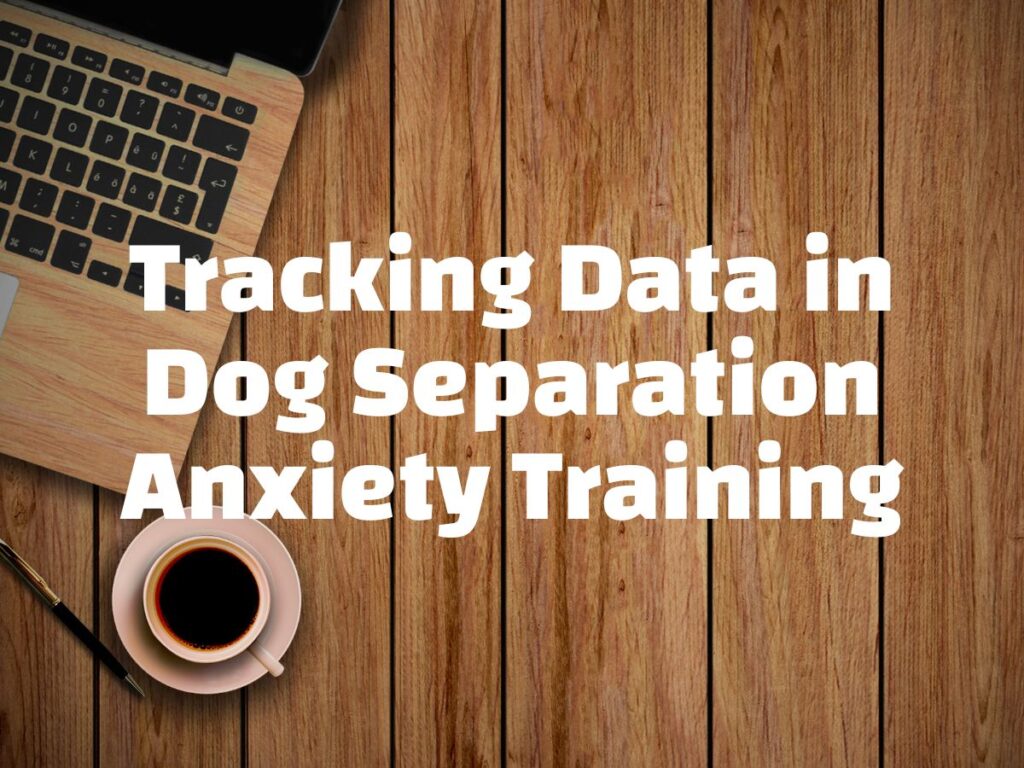The importance of data tracking in dog separation anxiety training
Data tracking in dog separation training is often underused, but is really important! Are you struggling to help your dog overcome separation anxiety? Then data tracking can help you to understand what's going wrong, as well as teach you when things are going right too!
Do you find it challenging to understand their behavior and make progress in their training? One powerful tool that can revolutionize your approach is tracking data.
By diligently collecting and analyzing variables such as time of day, exercise, and medications, you can identify patterns, triggers, and progress in your dog's behavior. Understanding the power of tracking data is crucial in addressing separation anxiety and creating a happier and more independent dog.
You can start working with a CSAT right away, just contact me and tell me about your dog or book a consult.

Importance of Tracking Data in Separation Anxiety
Tracking data is crucial for assessing the trend and trajectory of your dog's progress in separation anxiety training. By monitoring and analyzing data, you can gain valuable insights into your dog's separation related problems and their ability to cope with absences.
Data tracking allows you to identify behavioral patterns, signs of separation anxiety, and specific variables that may be affecting your dog's training progress. This analytical approach helps you make informed decisions and adjustments to your training techniques, leading to greater training success.
Through data tracking, you can pinpoint factors such as time medication is given, time the training is carried out, family member variables, exercise, mental enrichment, and any stressful events that may impact your dog's separation related behavior. By understanding these tiny variables, you can tailor your training plan and address any setbacks or difficulties more effectively.
Tracking data is an essential tool for success in separation anxiety training, because it allows us to see patterns when things go right and when things go not so right!
How to Track Data
To effectively track data in separation anxiety training, it's important to establish a system for collecting and organizing relevant information. This system should include data analysis, behavioral modification techniques, and training logs.
By tracking data on a spreadsheet every time you train, you can identify separation anxiety triggers, monitor training milestones, and assess the duration and effectiveness of each training session.
Consistency in training is key, so it's important to document the training schedule and goals. Additionally, tracking setbacks and challenges can help you make adjustments to the training plan, see where things have gone wrong and get answers!
By maintaining detailed training logs, you can track your progress, identify patterns, and make informed decisions to optimize your training outcomes.

What Data Should You Track
When tracking data for separation anxiety training, it's critical to identify and record specific variables that may influence a dog's progress. By collecting and analyzing data, you can gain valuable insights into the factors that contribute to a dog's separation anxiety and adjust the training plan accordingly.
Variables such as the time of day, the person conducting the training, exercise and mental enrichment, appetite (as well as digestion), medications, and any stressors should be tracked. These variables can impact a dog's comfort level and ability to cope with absences.
Consulting with a certified separation anxiety trainer will provide further expertise in analyzing the data and addressing training challenges.
Tracking Medication and Other Treatment Options
Consider incorporating medication and other treatment options to enhance the effectiveness of separation anxiety training for your dog.
Here are four key points to keep in mind when tracking medication and other treatment options:
- Consult with a professional: It's important to consult with a professional, such as a veterinarian or vet behaviorist, to determine the appropriate medication and dosage for your dog. They will be able to provide valuable insights and guidance in selecting the best treatment option.
- Adjusting Diet: I strongly believe there is not ‘one diet to rule them all' and diet can play a huge role in behavior. Making sure your dog is getting appropriate nutrition and not struggling with G.I Issues will be important for overall health – physical as well as mental. (After all, we all now know the store that serotonin is made in the gut!)
- Window film for visual stimuli: Window film can help reduce the visual stimuli that may trigger anxiety in dogs – we know we love a watch dog, but not when it gets obsessive and cause problems! By blocking the view outside, window film creates a calmer environment for dogs, which can aid in the effectiveness of behavior modification protocols for separation anxiety.
- Comprehensive treatment plan: It's crucial to use medication and other treatment options as part of a comprehensive treatment plan, which includes behavior modification techniques like desensitization, and ensured your dog is getting enough ohyscial and mental stimulation. This holistic approach ensures that all aspects of separation anxiety are addressed.
- Track progress and adjust accordingly: Continuously track your dog's progress when implementing medication and other treatment options. This data will help you assess the effectiveness of the chosen treatment and make necessary adjustments to optimize your dog's training progress.
Overall Benefits of Tracking Data
Tracking data is essential in addressing separation anxiety in dogs, as it helps identify patterns, triggers, and progress in their behavior. It allows for a more accurate assessment of the effectiveness of training techniques and provides valuable information for adjusting the treatment plan.
By tracking data, separation anxiety professionals and behavior consultants can make data-driven decisions and optimize the training process.
Learn more in our article did I cause my dog's separation anxiety or book a consult with a CSAT today.

